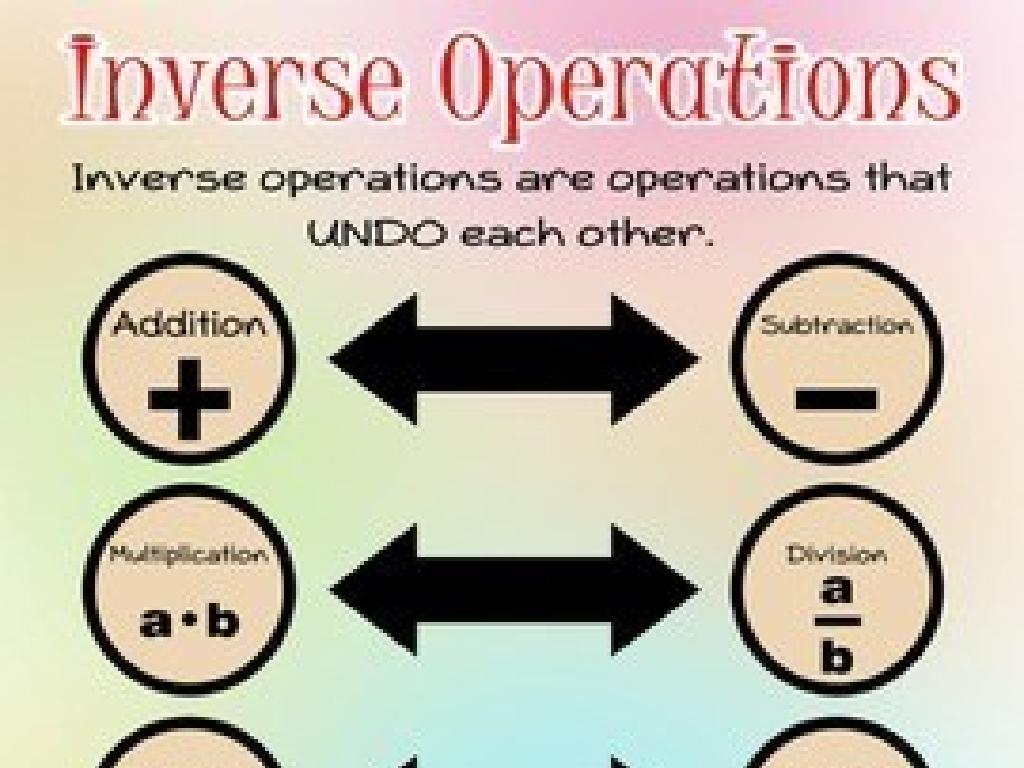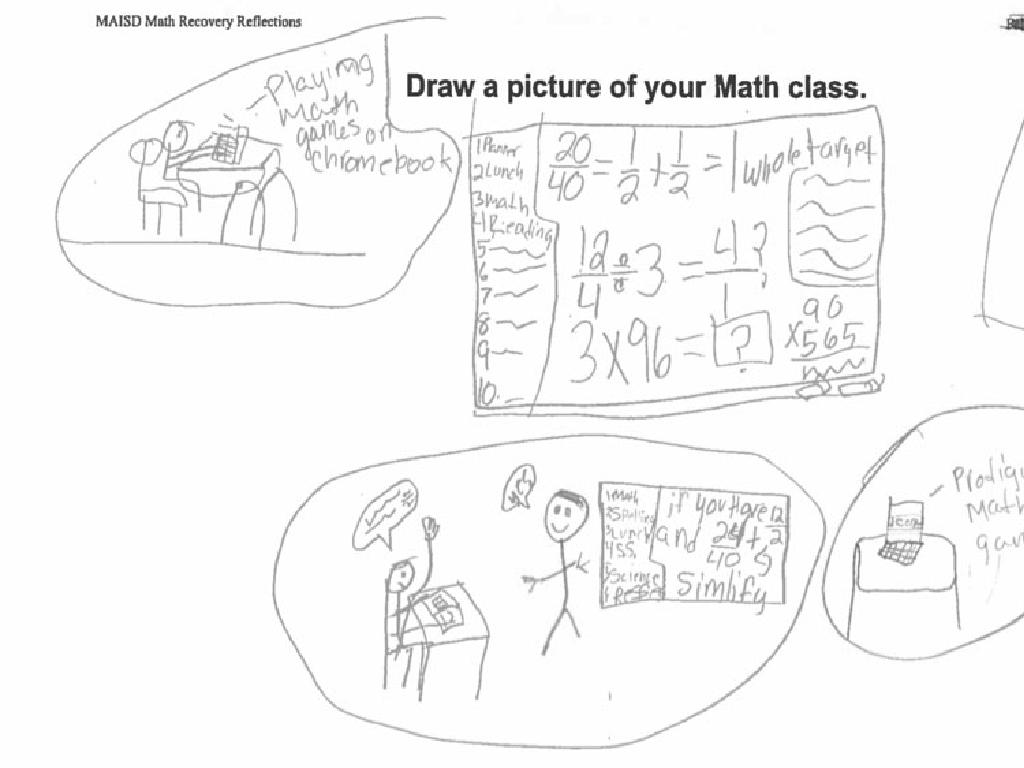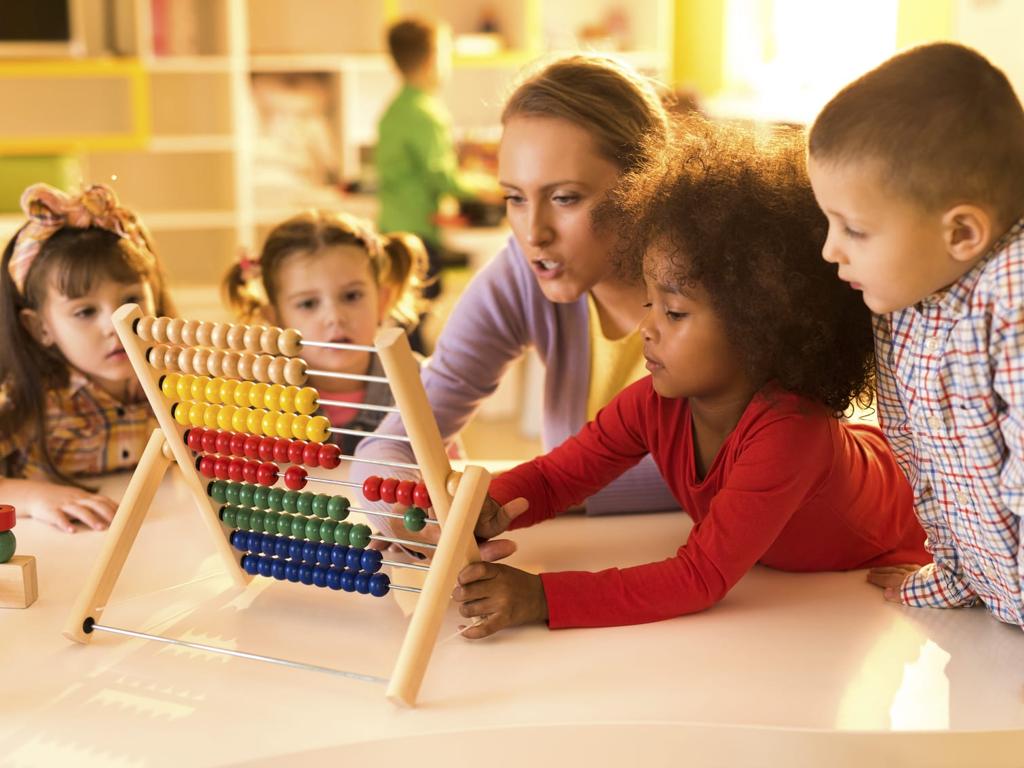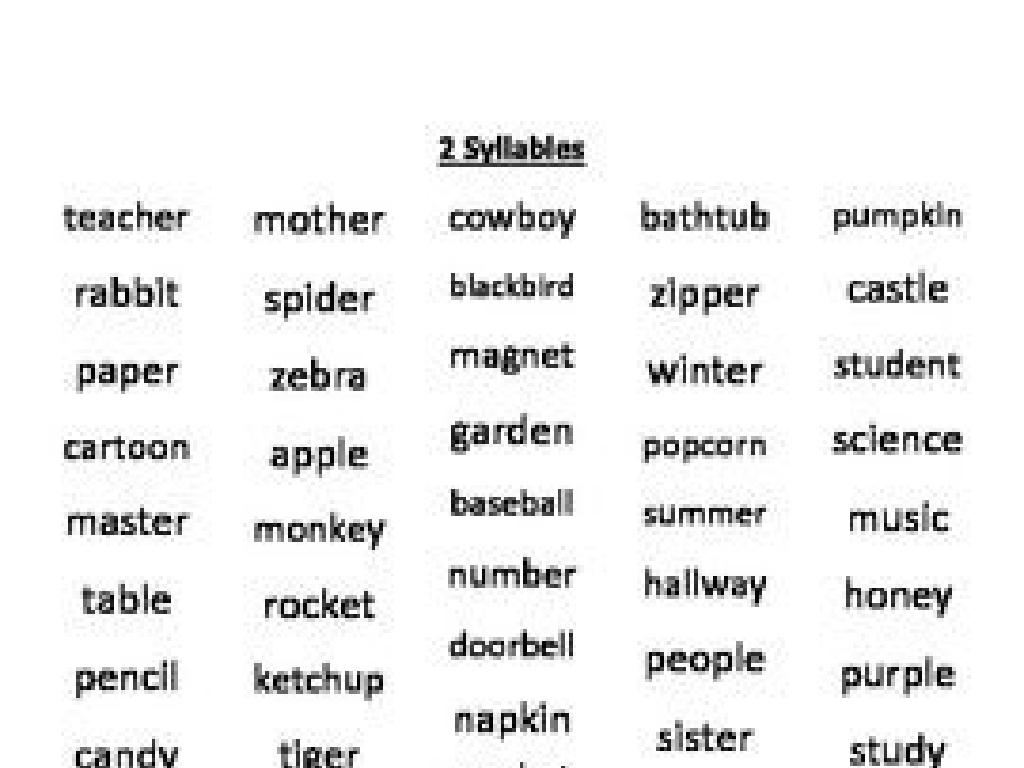Push And Pull
Subject: Science
Grade: First grade
Topic: Force And Motion
Please LOG IN to download the presentation. Access is available to registered users only.
View More Content
Exploring Push and Pull Forces
– What is force?
– Force is a push or a pull
– Motion makes things move
– Motion is when things move from one place to another
– Pushing and pulling actions
– Pushing a swing, pulling a wagon
– Examples of push and pull
– Push: sliding a book, Pull: tugging a rope
|
Begin the class with a warm welcome and an introduction to the basic concept of force, explaining that it is a push or a pull that can make things move or stop. Illustrate the idea of motion by showing how objects move from one place to another. Engage the students with examples of pushing and pulling, such as pushing a toy car or pulling a ribbon. Use simple, relatable examples to help them understand the concepts. Encourage the children to think of their own examples of push and pull they’ve encountered in their daily lives. This will help them connect the concept of force and motion to their personal experiences.
Understanding Force: Push and Pull
– Force is a push or a pull
– Forces make things move or stop
– Everyday examples of force
– Opening doors, playing with toys, kicking a ball
– Exploring how force works
– We use force to change how objects move
|
This slide introduces the concept of force to first-grade students. Begin by explaining that force is something that can push or pull things. It’s an invisible hand that can start or stop movement. Use relatable examples like opening a door (pull), playing with toys (push and pull), or kicking a ball (push) to illustrate the idea of force in everyday life. Encourage the students to think of times when they use force to move things at home or in the playground. This will help them connect the concept of force to their personal experiences, making the learning process engaging and intuitive.
Exploring Push Forces
– What is a push?
– A push is a force that moves things away from you
– Pushing moves things away
– When we push, objects move in the direction of the push
– Examples of push in action
– Pushing a toy car, a door, or a swing
– Class activity: Find pushable objects
– Look around the classroom or at home for items you can push
|
This slide introduces the concept of pushing as a force. Explain that a push is when you use your muscles to move something away from you. Demonstrate with simple objects like a ball or toy car to show how pushing affects them. Encourage the children to think of things they push in their daily lives. For the class activity, have students find objects in the classroom that they can push and describe how the objects move. This will help them understand the effect of push forces on objects and how they can control the movement by pushing harder or softer.
Understanding Pulling Forces
– What is pulling?
– Pulling is when you use force to move something towards you
– Pulling brings things closer
– Examples of pulling objects
– Door handles, wagons, and zippers are things we pull
– Class activity: Find pull examples
– Look around the classroom or home for items you can pull
|
This slide introduces the concept of pulling as a type of force. Explain that when we pull something, we exert force on it to move it closer to us. Use everyday examples to illustrate pulling objects, such as pulling a wagon, a drawer, or a zipper. For the class activity, encourage students to find and list items in the classroom or at home that they can pull. This will help them understand the concept of pulling and how it is a part of our daily lives. Make sure to supervise the activity to ensure safety and guide them to recognize the direction and effect of the pull force.
Push or Pull?: Understanding Forces
– What does it mean to push?
To push is to apply force away from you.
– What does it mean to pull?
To pull is to draw something towards you.
– Interactive game: Push or Pull
– Classify objects by the force used
|
This slide introduces the concept of push and pull to the students. Begin by explaining that a push moves something away from them, while a pull brings something closer. Use hand motions to demonstrate. Then, engage the students with an interactive game where they classify various objects based on whether they would push or pull them in real life, such as a door (push to open, pull to close) or a wagon (pull to move). This activity will help solidify their understanding of the two types of forces. For the teacher: Prepare a list of common objects beforehand for the game and consider bringing some into the classroom for a hands-on experience. Encourage the students to explain their reasoning for each classification to foster critical thinking.
Force in Our Daily Lives: Push and Pull
– Everyday uses of push and pull
– Opening doors: a push or pull
– When we enter or leave, we push or pull the door
– Playing on swings: back and forth
– We push to start swinging, gravity pulls us back
– Using drawers: pulling out, pushing in
– We pull drawers to get things, push to close
|
This slide aims to illustrate the concept of push and pull forces in everyday situations that the students can easily relate to. Begin by explaining that a force is simply a push or a pull. Provide clear examples such as opening a door, which can be done by pushing it away or pulling it towards oneself, depending on the type of door. Discuss how playing on a swing involves pushing to start the motion and then the pull of gravity brings the swing back. Highlight how we use a pulling force to open a drawer and a pushing force to close it. Encourage the students to think of other examples of push and pull they encounter daily. This will help them understand the practical applications of these forces and how they move objects.
Experiment Time: Force in Action!
– Observe force with balls and ramps
– Fun experiment setup
We’ll use different sized balls and various ramp inclines.
– Make predictions on ball movement
What do you think will happen when we push the ball?
– Discuss our observations after
|
This slide introduces a hands-on experiment to help first graders understand the concept of force through a practical demonstration. Set up ramps of different inclines and provide balls of various sizes. Guide the students to predict what will happen when they push the balls down the ramps. Will the balls move faster on steeper ramps? What about heavier versus lighter balls? After the experiment, discuss the observations. Did the balls move as predicted? This activity will help students grasp the idea of push as a force and how it affects the speed and distance a ball travels. Encourage every student to participate and share their thoughts.
Class Activity: Push and Pull Hunt
– Let’s go on a scavenger hunt
– Find items to push and pull
– Think about how you move them
– Does it move away when you push? Does it come closer when you pull?
– Get ready to share your discoveries
|
This activity is designed to help students identify and understand the concepts of push and pull in a fun and interactive way. Set up a scavenger hunt in the classroom where students have to find objects that they can push and objects they can pull. Provide guidance on safety and ensure they handle classroom items with care. After the hunt, facilitate a discussion where each student shares what they found and describes the action they used. Possible activities: pushing a toy car, pulling a string, pushing a book across a table, pulling open a drawer. This will help them to practically relate to the concepts of push and pull in their environment.
Junior Scientists of Force!
– Congratulations on learning push and pull!
– Force involves pushing and pulling
– Force is a push or a pull that makes things move
– You’re now junior scientists!
– Keep exploring force and motion
– Try to notice push and pull in your daily life
|
This slide wraps up the lesson on push and pull, reinforcing the concept of force in a way that’s celebratory and empowering for first graders. It’s important to praise their efforts and understanding. Remind them that force is simply a push or a pull that can make things move or stop. Encourage them to continue observing and thinking about how force and motion play a role in their everyday activities, like opening doors (pull) or playing with toys (push). This will help solidify their understanding and spark curiosity about the physical world around them.






